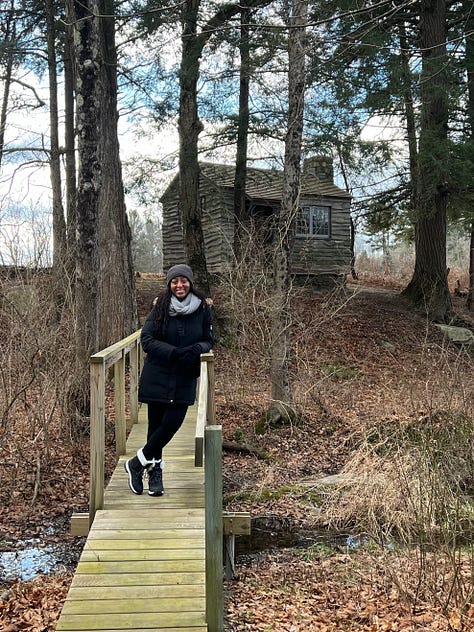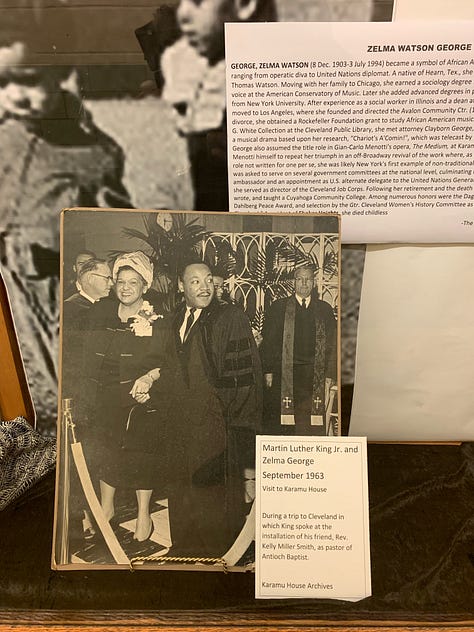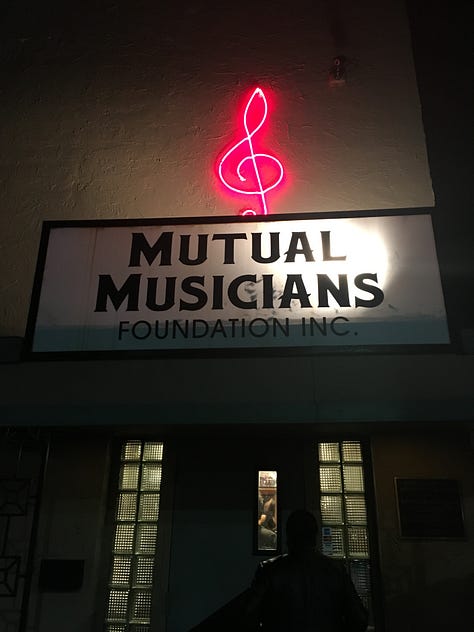We need to change the way we talk about Black History Month.
A rant about how the travel industry gets Black history month wrong + a reveal of my next Black Travel city guide.
I’m not writing about Black history month this year. This is a big deal so let me flex on y’all for a minute. I’ve covered Black history month through the lens of travel for globally-respected media publications and travel brands like the New York Times (here, here and here), Veranda, CNN Travel, and more over the years, and it has personally been very important for me to do so. Recently though, I’ve become disillusioned with much of the travel content around Black history month for several reasons. First, I noticed that what was defined as “Black history” seemed to be centered on only two eras within the wide and varied four century history of African-Americans: enslavement and the Civil Rights movement. The same thing applied to geography. Every time I saw a Black history travel story centered in the deep south, or perhaps one that tracked destinations outside of the south along the Underground Railroad, I wanted to SCREAM. It made me feel like Black history month and Black travel was always an afterthought and a scramble to get something published but with no real care behind the storytelling.
As you can see from the articles I linked above, I was part of the problem. Part of it was due to the fact that there truly were some lesser known places I wanted to shine a light on as a part of a round up, but mostly it was due to losing arguments with editors who wanted to focus on the same general story of suffering-turned-resilience. Whether that be due to laziness or a desire for SEO-driven clicks, I don’t know, but the experience was really starting to get on my nerves and was a huge reason why I started this newsletter. I wanted to tell both Black history and Black present travel stories without anyone telling me that the subject matter wasn’t important enough to their audience or “not a travel story”.
This past December, I had every intention of writing Black culture related travel stories this year for my media clients, but in a different way. After the most recent election results and watching corporations rolling back their DEI efforts left and right, I was fucking sick of America. As someone who is working to build a brand to help Black American travelers feel safe anywhere they go in their OWN country, I started to think that perhaps my journalism for these outlets with major audiences should focus on the Black Americans who no longer felt like America was for them. I pitched story after story about Black American communities abroad, people who had chosen to follow in the footsteps of ancestors like James Baldwin and Audre Lorde who moved abroad either permanently or temporarily to countries including France, Mexico and Ghana. No one was interested. I was told it either wasn’t a “travel” story or didn’t fit within their editorial line up for Black history month.
After giving up on trying to find a home for that idea, I decided to shift my focus back to this wretched country that I begrudgingly love and will continually try to make better for those after me. I came across this Bloomberg article featuring my friend and executive director at the African American Cultural Heritage Action Fund, Brent Leggs, who so accurately expressed my frustration with how American society tends to view Black history month as a whole.
“Sometimes we stereotypically define the Black experience with regards to slavery and civil rights, but there are spaces that celebrate and uplift the Black middle-class experience that are lesser known,” says Leggs.
“It’s not just Black people who need to be introduced to the complexity and beauty of our own contributions to our national history. It’s also all other Americans.”
For now, I will continue to be one of those Black Americans that tries to introduce the complexity and beauty of our own contributions to both our national history and our present. I’m committed to resisting the stereotype in my storytelling that every Black American life over the past four centuries is or was about a struggle. Now, more than ever, I feel more committed to my goal of making people witness Black joy and understand that Black Americans have touched every corner of the United States and we are still here. We aren’t going anywhere.
I now understand to the core of my bones that niche travel will grow, especially travel offerings and content created for and by Black Americans. Now is not the time to run elsewhere (although I don’t blame you if you do), and to be realistic, most people can’t leave America as easily as they think they can. Instead, I believe now is when we dig our heels in even deeper to this land that is stained with our blood, sweat and tears. Now is when we become even more conscious of how and where we spend our dollars when it comes to our travels, and I hope guides like my recent Black Travel Guide to Seattle can be a resource to help you support businesses who align with your values.



In the meantime, I’ve prepared a list of five of my favorite Black history-meets-present sites across America that you may have never heard of. What I mean by history-meets-present is that while these places may have reached a zenith decades ago, they currently still exist and can be experienced interactively in the present. You won’t feel like you’re walking through a museum in these places, instead you’ll feel the vibrancy of their past and be inspired by their new iterations today.
James Weldon Johnson’s writing cabin, Great Barrington, MA - I was fortunate enough to visit the Berkshires writing cabin of renaissance man James Weldon Johnson, as part of my fellowship with the National Trust, and write about it. The cabin isn’t quite open to the public yet but will be this summer. Check out the foundation to stay updated.
Mutual Musicians Foundation, Kansas City, MO - Established in 1917, this was the home to one of the first African-American music unions in the country, welcoming Black musicians during a time when they weren’t welcome to play most at most clubs and lounges. The tradition of jam sessions among musicians on Fridays and Saturday nights has gone strong since 1930, but be warned, things don’t really get hopping until about 2 am. I visited a few years ago and stayed until 5 am and was completely delirious, but happy.
Karamu House, Cleveland, Ohio - I’m a big fan of live theater, so it was such an honor to visit Karamu House a few years ago, the oldest theater producing African American works in the nation. It was founded as a settlement house dedicated to the arts in 1915 by a Jewish couple, and by the 1920s attracted tons of Black artists, including Langston Hughes, Zora Neale Hurston and Lorraine Hansberry. Langston Hughes premiered Black Nativity here in 1961.
*Eldorado Ballroom - Houston, TX - I became aware of the Eldorado after they received a grant from the African American Cultural Heritage Action Fund in 2022. It was a famed nightclub once listed as a “must visit” place in the Green Book, deep in the heart of the Third Ward, Houston’s historic Black neighborhood. Project Row Houses, an excellent example of community-driven historic preservation and restoration, was gifted the ballroom in 2003 and has worked steadily to restore it to its full grandeur. It reopened in March 2023 with a cafe, art gallery and market on the ground floor, and live music and dancing on the second floor.
*Wilfandel Club - Los Angeles, CA - I adore the story of the Wilfandel Club and can’t wait to walk its beautiful hardwood floors one day. I wrote about this historic women’s club for Veranda magazine a few years ago, and there are tons more details in that article, but long story short, in 1945 two Black pioneering women gathered 50 friends to raise $10,000 to buy a mansion to host weddings, baby showers, dinners and other gatherings they weren’t allowed to have in most venues in segregated Los Angeles. Club members still own the beautiful home and will be celebrating 80 years of service and community this year.
*I have not visited this site but I plan to in the near future
Alright rant done. How do you feel about how Black history month has or has not been celebrated in the travel space this year? Have you seen any interesting Black travel stories lately? Or are you like me and still riding high from Kendrick Lamar’s super bowl halftime show and DGAF what anyone else is talkin’ bout? yea, same.
Housekeeping note: If you want to read my next Black Travel guide, now is the time to become a paid subscriber! I’m happy to announce that the next guide will be a Black Travel Guide to Asheville, North Carolina.




I haven't been to any of these places so adding to my various lists! I did visit Project Row Houses which was amazing but not the ballroom. In general I can't say I've paid attention to how the travel industry talks about Black History Month but I appreciate any content similar to this, talking about under the radar aspects of Black history or places to visit with a Black lens woven into the itinerary
Thank you for sharing this and the places to visit! I don’t pay close attention to how the travel industry talks about Black travel because I seek Black creators to share their experiences and I usually go to YouTube. I don’t mess with TikTok these days. However, I know people seek “Black things to do in (fill in the destination)” on the app and I wonder if more people will gravitate to seeking information from source.
Also, I’m not sure if you know Martinique Lewis, she shares a lot of “Black in (fill in destination)” content. Keep doing what you’re doing! I’m excited to see your platform expand!